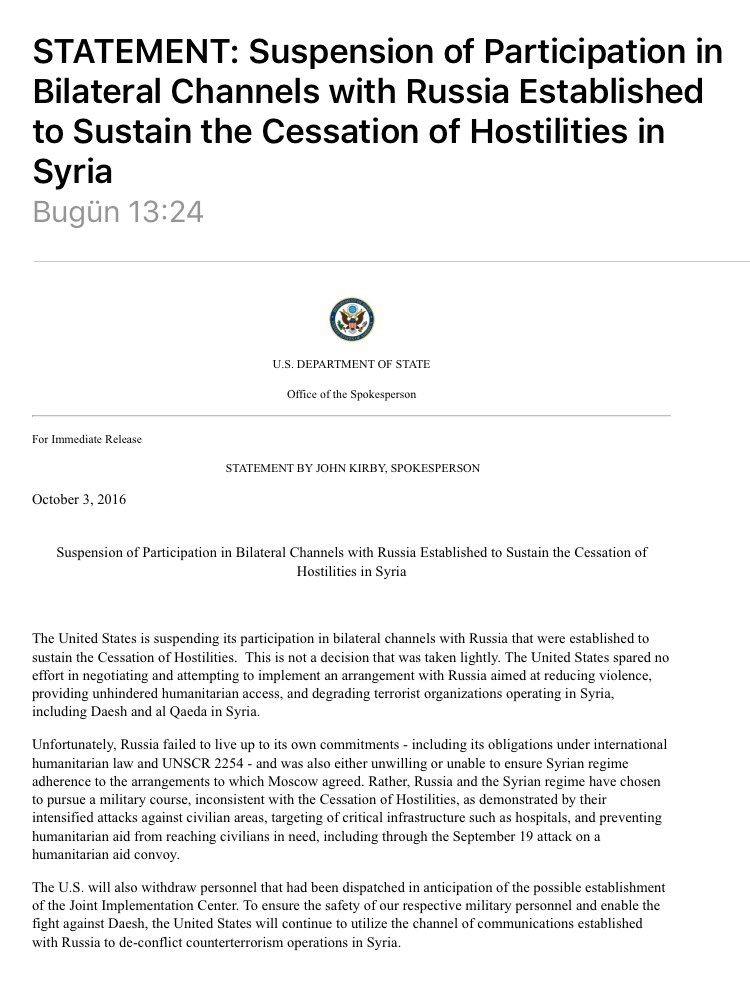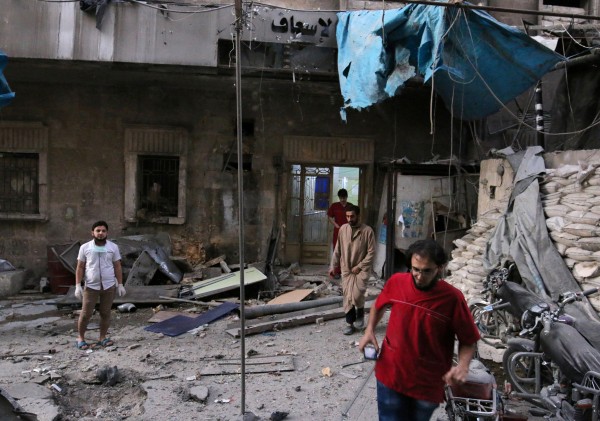Related reading: 2015, FBI Arrests Chinese Millionaire Once Tied to Clinton $$ Scandal
Related reading: The Russia-China relationship could lead to some interesting changes on the global stage.
And the biggest changes are occurring far away from Washington’s orbit.
.jpg) US President Barack Obama (L-R), China’s President Xi Jinping, and Russia’s President Vladimir Putin during a photo shoot at the International Convention Center at Yanqi Lake in Beijing, November 11, 2014. REUTERS/Kim Kyung-Hoon
US President Barack Obama (L-R), China’s President Xi Jinping, and Russia’s President Vladimir Putin during a photo shoot at the International Convention Center at Yanqi Lake in Beijing, November 11, 2014. REUTERS/Kim Kyung-Hoon
Although the Sino-Russo relationship predates the Ukraine conflict, there’s no question that the crisis has shifted Moscow even more toward Beijing.
Over the last year, we saw the two countries sign highly publicized energy deals, conduct joint military exercises, and even generally support each others’ foreign policy adventures. More here from BusinessInsider.
Here are a few questions for investigators in both houses of Congress to pose:
NYT’s: To Samuel Berger, the Hogan & Hartson trade lobbyist turned national security adviser: Why can’t Congress see your memo to President Clinton summarizing the devastating Cox report on espionage when it was submitted for security clearance in January? With the report now public, no claim of secrecy can properly be made.
Clinton pretended two months ago to have been uninformed of wholesale espionage. Did Berger’s January cover memo truly reflect the Cox report’s revelations, or did it lull the President into a false sense of national security?
To Bill Richardson, Energy Secretary since September 1998: You were briefed on espionage suspicions in November, and received the Cox report in January. Did you never have occasion to mention its serious implications on China policy to the President? You knew Secretary of State Albright was going to China in February; why did you withhold it from her? Did the White House suggest she be kept ignorant, or was it your own idea?
To F.B.I. Director Louis Freeh: Attorney General Janet Reno says ”I was not apprised of the details of the case at the time the decision was made” to reject wiretap surveillance of Wen Ho Lee at Los Alamos. Didn’t you think this was important enough to take to the top? She also says your 1997 request ”did not contain a request to search any computer.” If that is true, why not?
To the Senate Democratic leader, Tom Daschle: The bipartisan Cox report charges the White House with failing to inform Congress, but you say ”Republican chairs of the Congress were warned about this as early as 1996 and also chose to do nothing.” Did you read those ”warnings” before accusing Senator Arlen Specter and Representative Porter Goss of failing in their intelligence oversight duties? Can the public now see if those staff briefings were complete?
To Dan Burton, chairman of the House Government Reform and Oversight Committee: With Reno Justice allowing all Clinton’s illegal Asian fund-raisers to cop a plea and walk, you’ve subpoenaed Charlie Trie for June 10 and John Huang for June 17. Will you allow the ranking Democrat, Henry Waxman, to turn hearings into a partisan circus, or will you depose Trie and Huang extensively beforehand to discover links to Bruce Lindsey, the D.N.C.’s Don Fowler and Hillary’s Harold Ickes?
To George Tenet, Director of Central Intelligence: You reported to Cox that information on China’s theft of our W-88 nuclear warhead design came from a ”walk-in” planted by Chinese intelligence. That’s counterintuitive counterintelligence; does nobody in C.I.A. dispute the ”dangle” theory? Where is he now, and is he (or she) singing?
To Richard Shelby and Bob Kerrey of Senate Intelligence: The Cox report ran 900 pages, but nearly 400 pages were cut out by the Clinton sanitizers. Was all of this really for security reasons, or do many redactions cover C.I.A., F.B.I. and White House embarrassments?
To Senator Robert Torricelli, Democrat of New Jersey: You told CBS’s Bob Schieffer that Clinton should talk to Reno about ”her ability to perform her duties.” Are you worrying about her judgment under a physical affliction, or making a nonpartisan judgment on sustained misfeasance at Justice — or helping the White House toss her off the sled to save Sandy Berger?
The biggest question is this: Will we fall for the usual ”it’s old news” and ”everybody did it” defenses? Or will we connect the dots from the (a) corrupt Asian and satellite-producer contributions to the (b) refusal to stop the theft of nuclear codes lest it offend Beijing to the (c) change of policy to sell China powerful computers capable of using those codes to simulate tests?
The House is being serious. What about the Senate?
****What is this all about you ask?
*The People’s Republic of China (PRC) has stolen design information on the United States’ most advanced
thermonuclear weapons.
* The Select Committee judges that the PRC’s next generation of thermonuclear weapons, currently under development, will exploit elements of stolen U.S. design information.
* PRC penetration of our national weapons laboratories spans at least the past several decades and almost
certainly continues today.
****
• The stolen information includes classified information on seven U.S. thermonuclear warheads, including every currently deployed thermonuclear warhead in the U.S. ballistic missile arsenal.
• The stolen information also includes classified design information for an enhanced radiation weapon (commonly known as the “neutron bomb”), which neither the United States, nor any other nation, has yet deployed.
• The PRC has obtained classified information on the following U.S. thermonuclear warheads, as well as a number of associated reentry vehicles (the hardened shell that protects the thermonuclear warhead during reentry).
****
In addition, in the mid-1990s the PRC stole, possibly from a U.S. national
weapons laboratory, classified thermonuclear weapons information that cannot be
identified in this unclassified Report. Because this recent espionage case is currently
under investigation and involves sensitive intelligence sources and methods, the
Clinton administration has determined that further information cannot be made public
without affecting national security or ongoing criminal investigations.
The W-88, a miniaturized, tapered warhead, is the most sophisticated nuclear
weapon the United States has ever built. In the U.S. arsenal, it is mated to the D-5 submarine-
launched ballistic missile carried aboard the Trident nuclear submarine. The
United States learned about the theft of the W-88 Trident D-5 warhead information, as
well as about the theft of information regarding several other nuclear weapons, in 1995.
The PRC has stolen U.S. design information and other classified information
for neutron bomb warheads. The PRC stole classified U.S. information about
the neutron bomb from a U.S. national weapons laboratory. The U.S. learned of the
theft of this classified information on the neutron bomb in 1996.
In the late 1970s, the PRC stole design information on the U.S. W-70 warhead
from the Lawrence Livermore Laboratory. The U.S. government first learned of this
theft several months after it took place. The W-70 warhead contains elements that
may be used either as a strategic thermonuclear weapon, or as an enhanced radiation
weapon (“neutron bomb”). The PRC tested the neutron bomb in 1988.
The Select Committee is aware of other PRC thefts of U.S. thermonuclear
weapons-related secrets. The Clinton administration has determined that further
information about PRC thefts of U.S. thermonuclear weapons-related secrets cannot
be publicly disclosed without affecting national security.
The PRC acquired this and other classified U.S. nuclear weapons information as
the result of a 20-year intelligence collection program to develop modern thermonuclear
weapons, continuing to this very day, that includes espionage, review of unclassified
publications, and extensive interactions with scientists from the Department of
Energy’s national weapons laboratories.
**** The full Cox Report is 700 pages but this link is the summary. So, those questions the New York Times asked in 1999 need to be asked again today of both Hillary and Bill. What say you?



